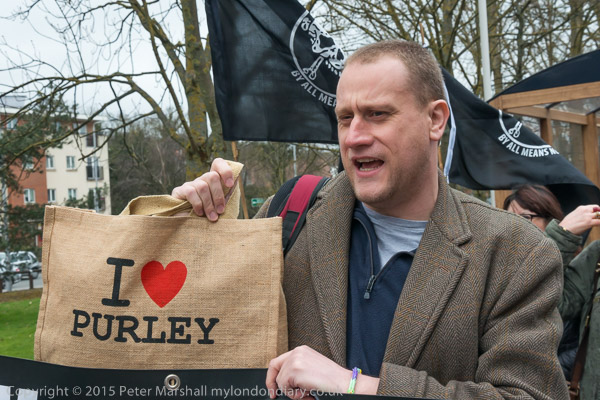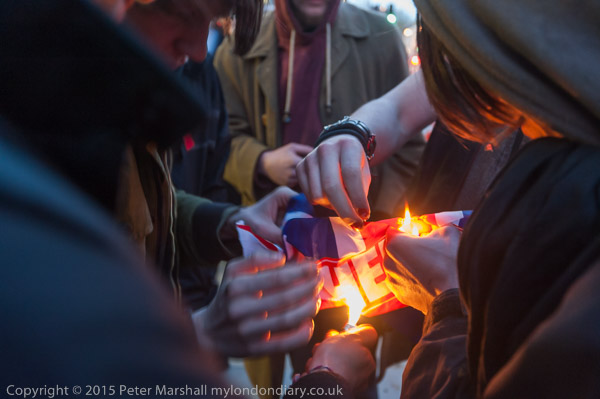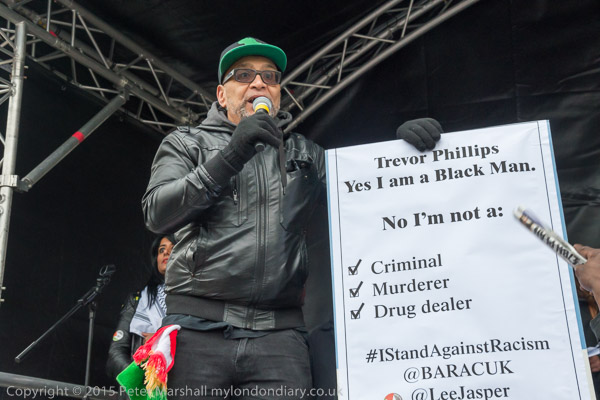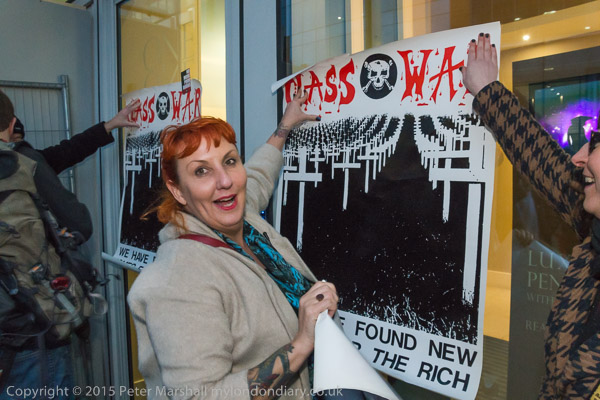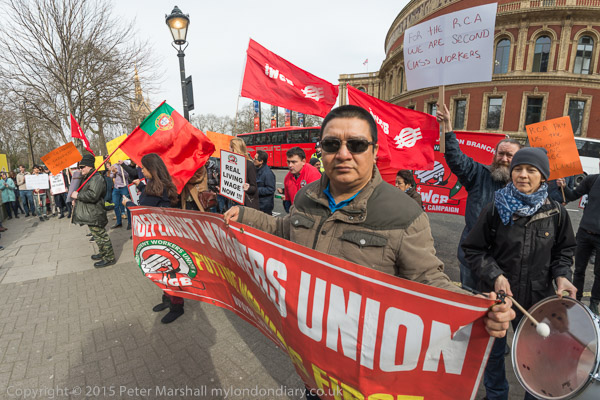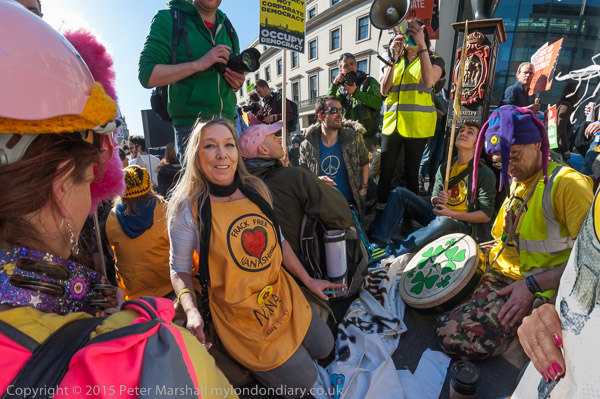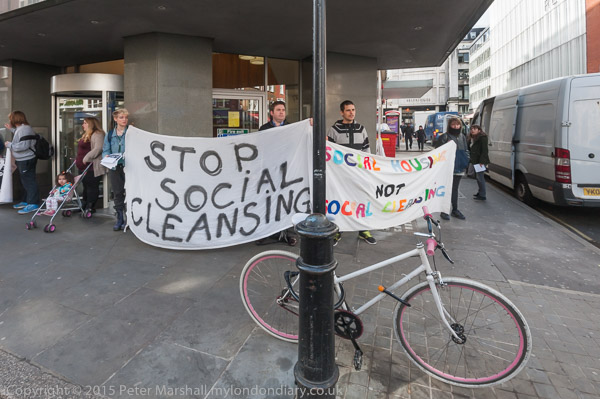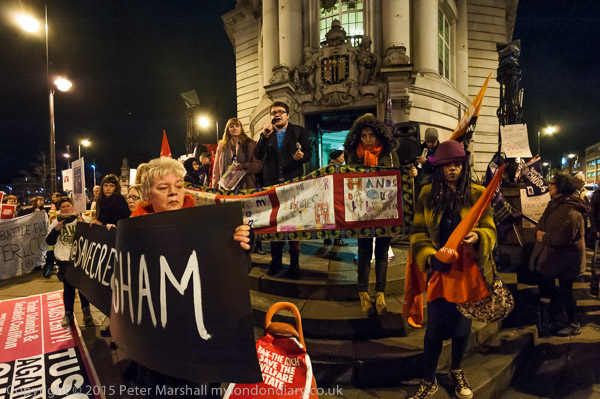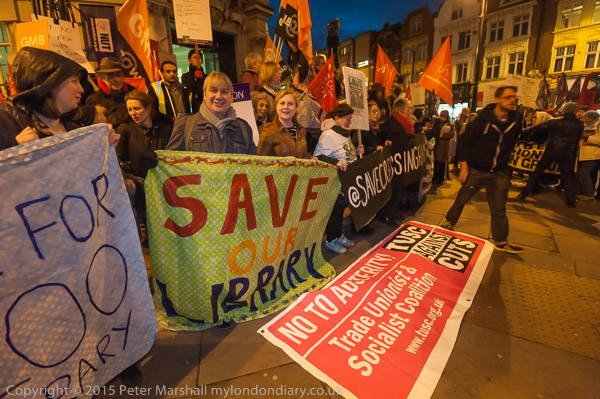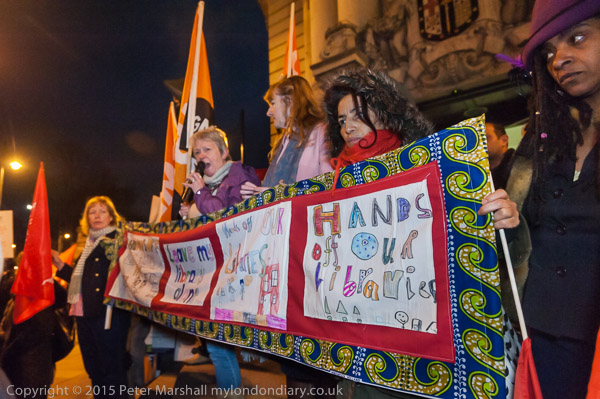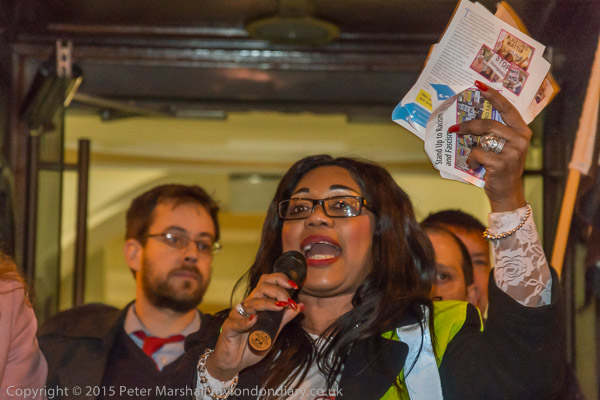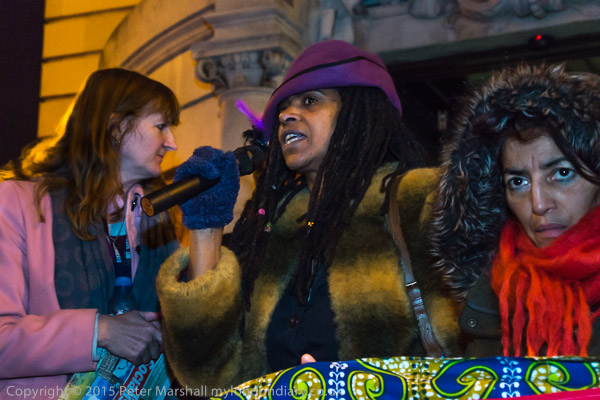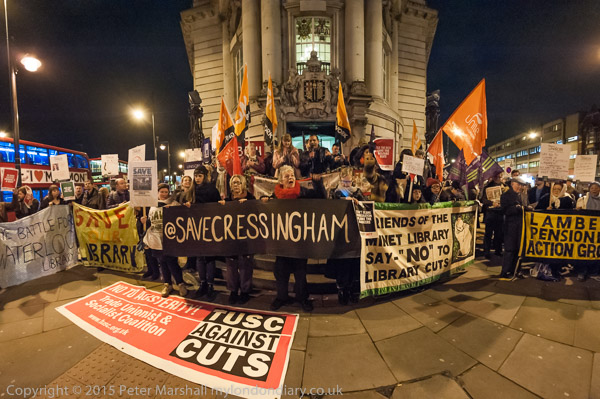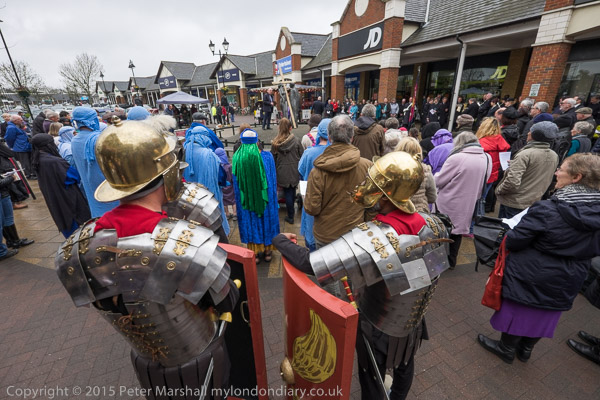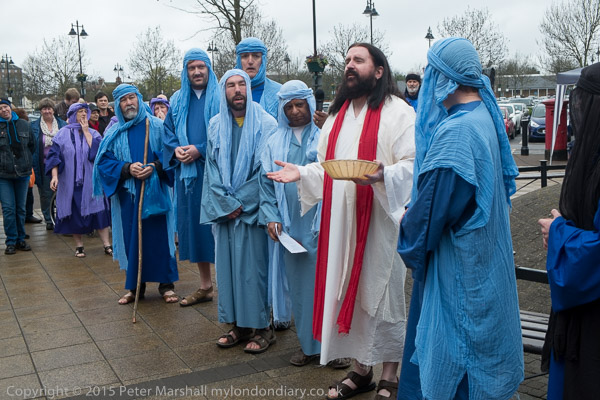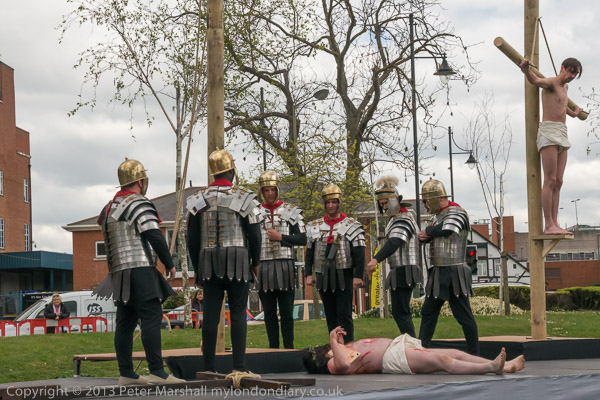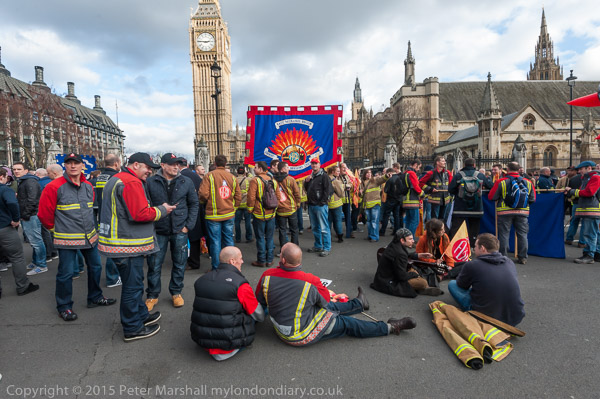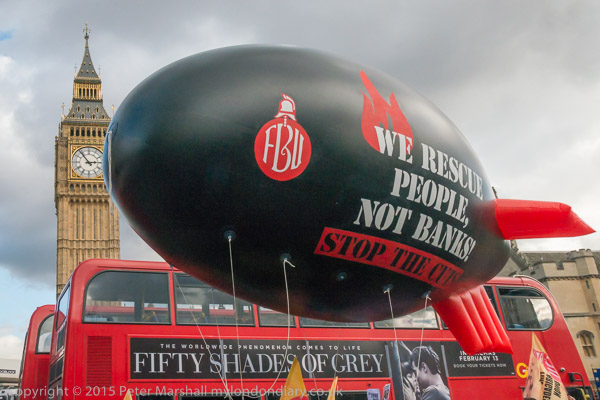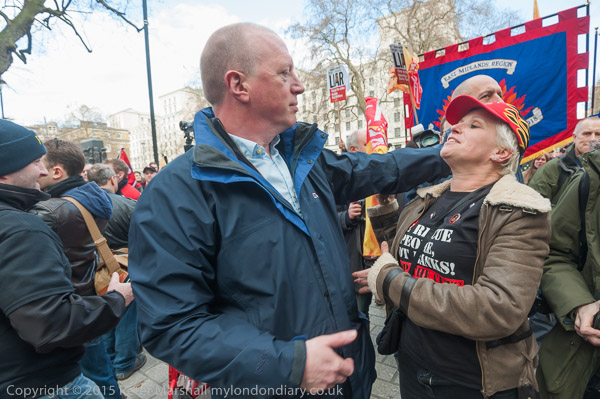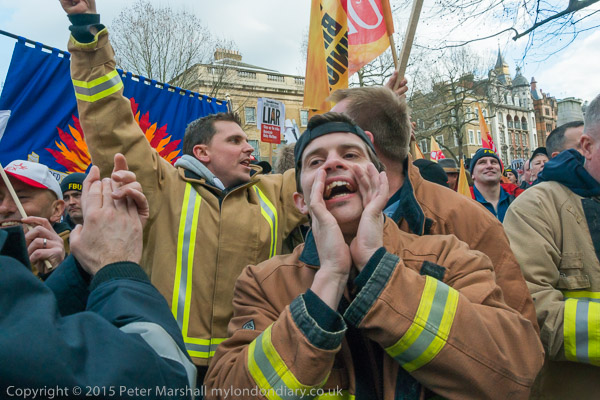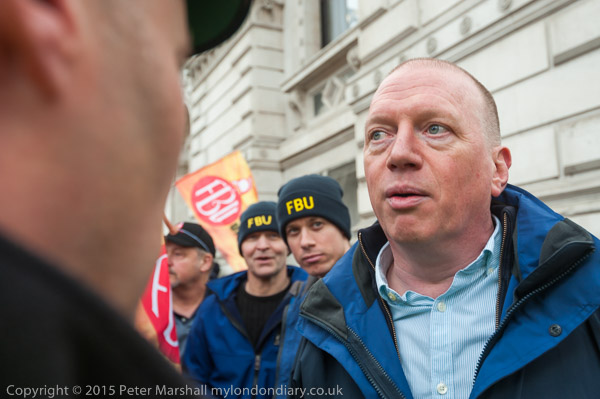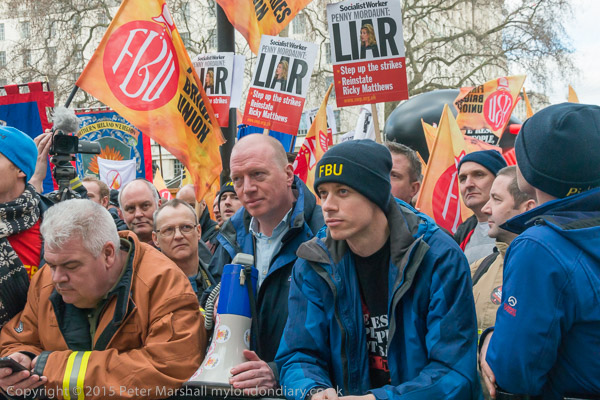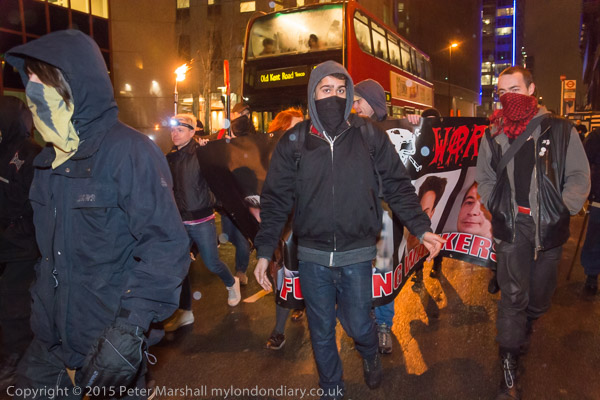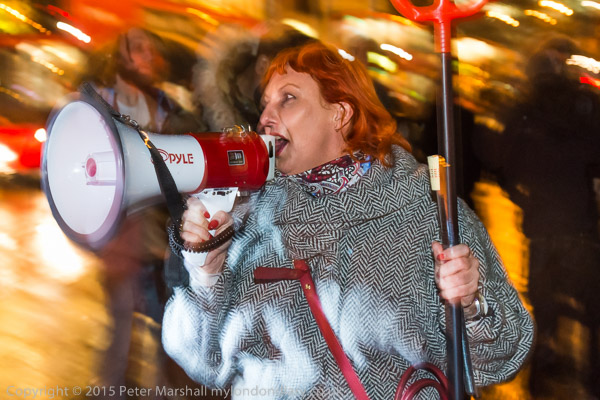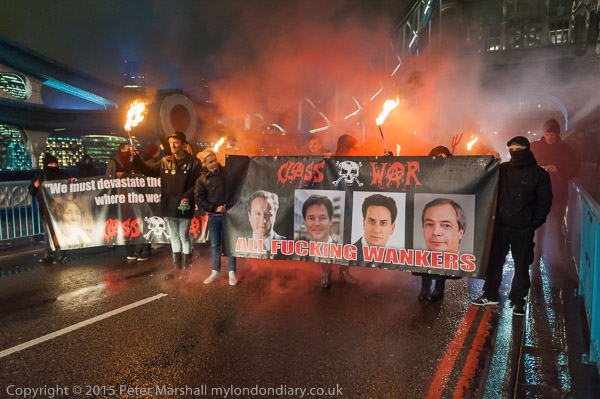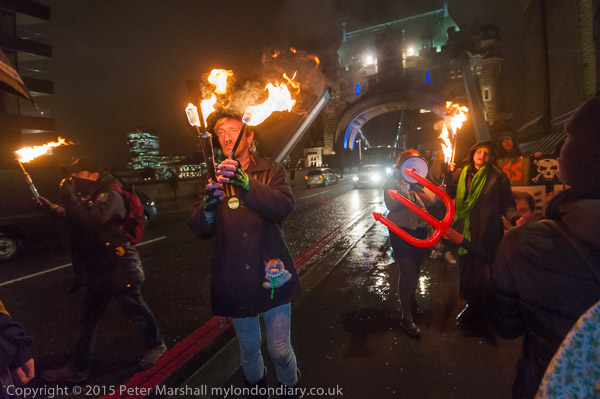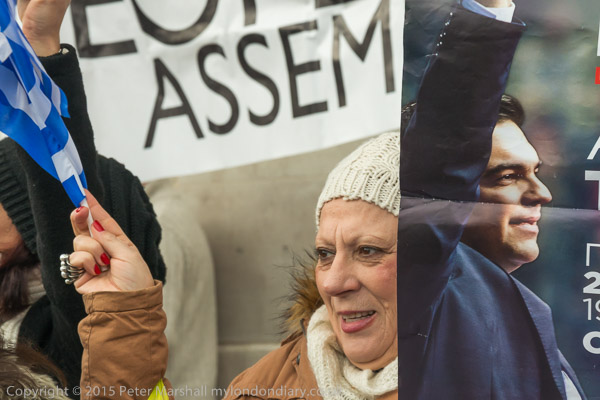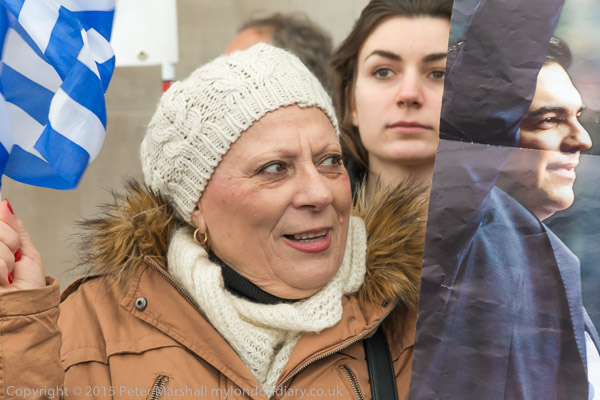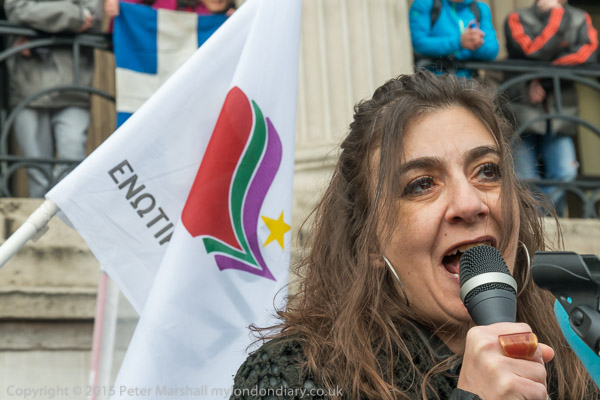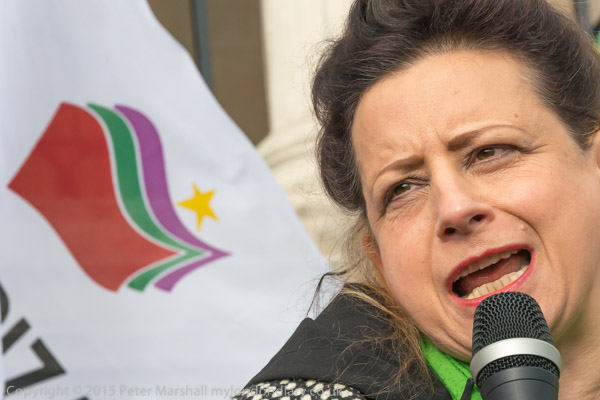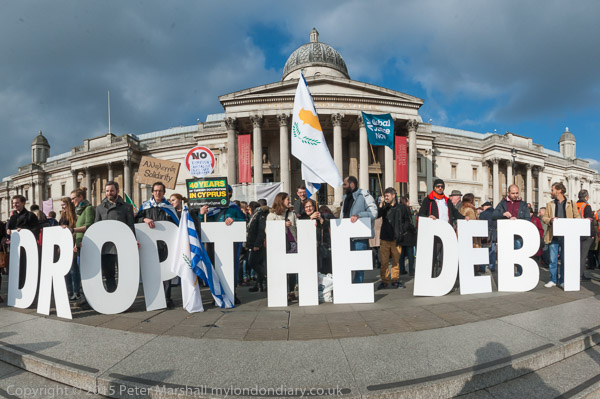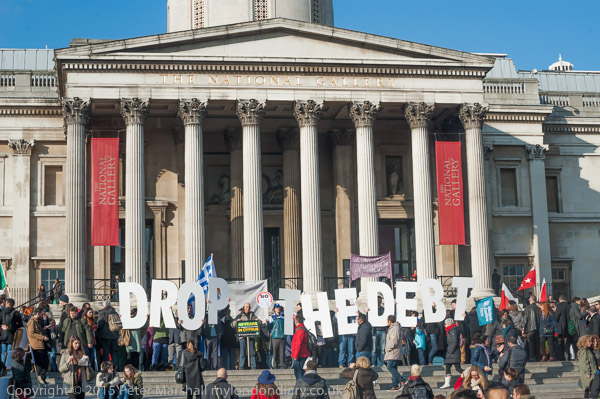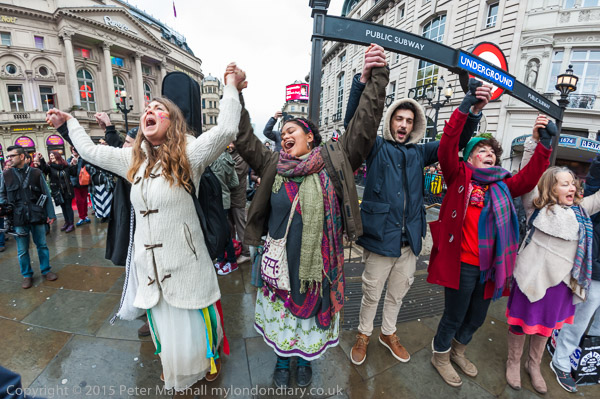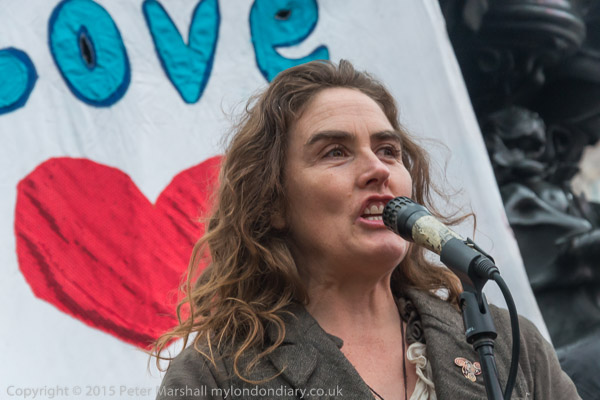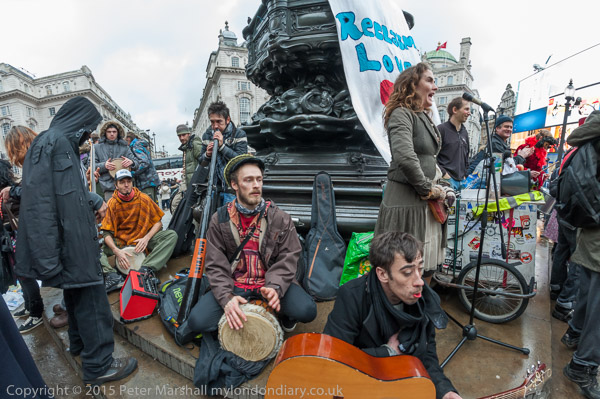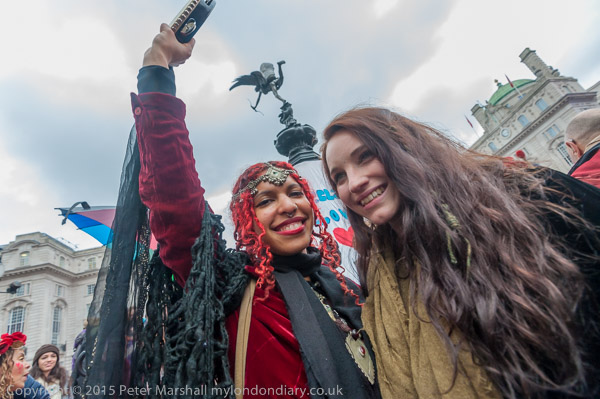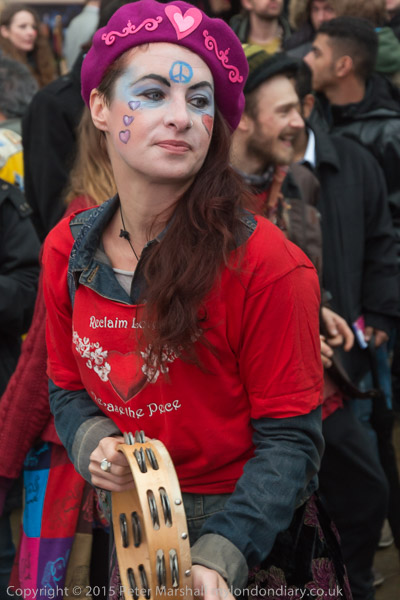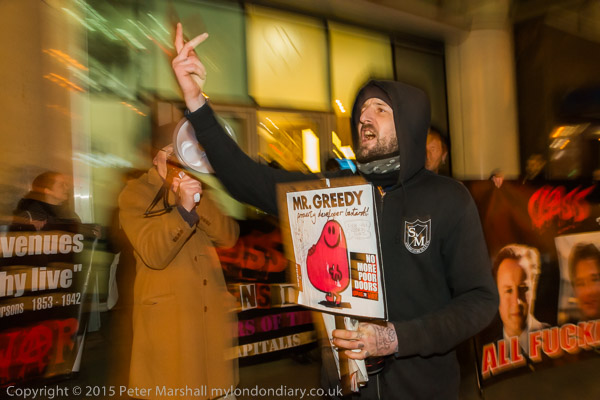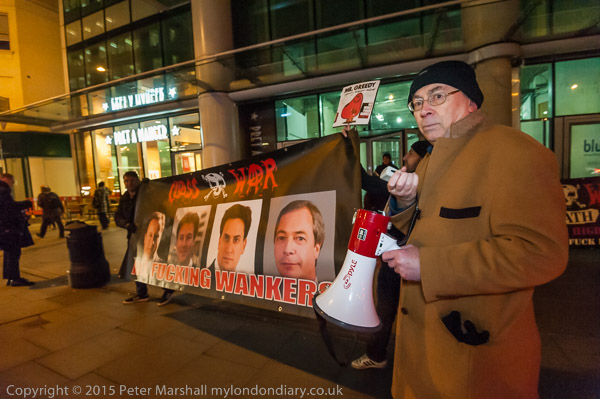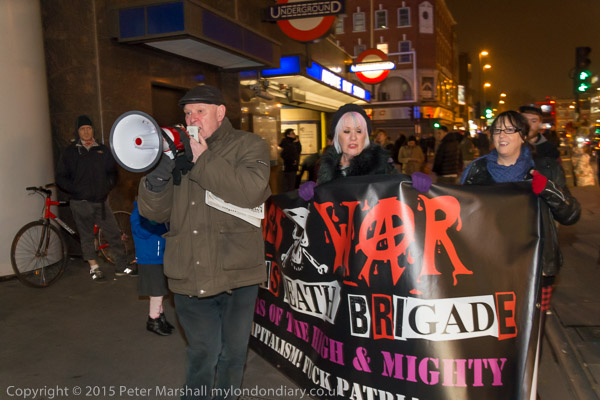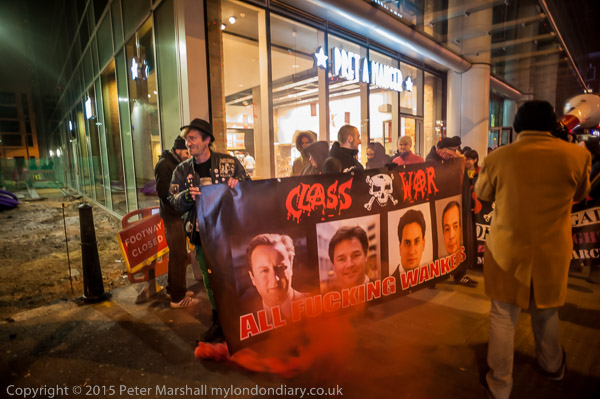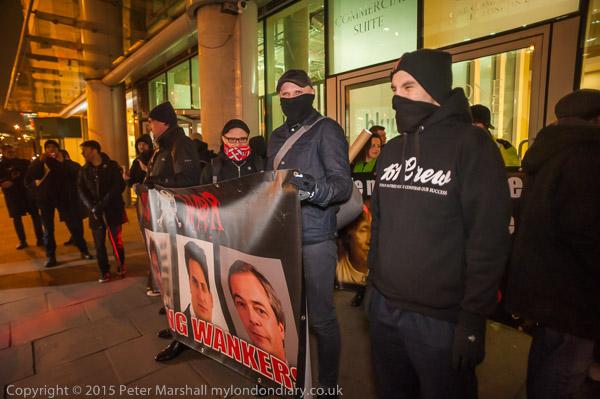In 1951, a part of the Festival of Britain was the Live Architecture Exhibition, on what became knows as the Lansbury Estate in Poplar, and at its centre was Chrisp St Market, the work of architect Frederick Gibberd, the first purpose-built pedestrian shopping centre in the UK.
It wasn’t entirely succesful – and his iconic Clock Tower built as an observation tower soon had to be caged in against suicides, but it was an important statement of a new vision in housing, with huge programmes over the next thirty or so years to provide social housing for the mass of the population, replacing both the areas destroyed by bombing and the decaying streets of jerry-built Victorian slums. There was a national feeling, an urgency that something had to be done about the housing problem, and a consensus that a large part of the solution lay in providing social housing at resonable cost for the majority of the population at least in the major cities.
The problem was also addressed by the New Towns, such as Bracknell, where I myself lived in a Development Corporation flat for several years in the early 70s, but in London and other cities it was an era of large estates, often system-built and with much bare concrete surfaces.
The best of these were architectural gems and masterpieces of design, and while some may have looked they were often spacious and comfortable, offering many residents for the first time the kind of conveniences we now take for granted. But like all property they needed proper management, with regular repairs and maintenance, and in most cases local authorities failed to meet the challenges of ownership, allowing properties to run down. There were sometimes design faults, more often corners cut by the builders and, certainly in later years financial pressures on councils that made their job impossible.
Now the pressures on these estates come largely from the increase in land values and the greed of developers and councils. Many of these large estates are in highly desirable locations, and huge profits can be made by demolishing and rebuilding at a much higher density and to lower space standards for private sale. It’s a process part-fuelled by overseas investors buying properties not essentially to live in but for the capital gains from rapidly increasing house prices, particularly in London. Investment brochures for one block in Aldgate suggested that buyers would see a 35% rise in the value of their flats in around three years- and that prediction may well turn out to have been conservative. But can we afford to let London become simply a proiftable safe deposit for foreign money rather than keeping it as a living city?
The name of this un-housing game for financiers is ‘regeneration’; a worthy aim announced in the early years of the last Labour government with probably the best intensions that has turned into a nightmare for Londoners on low or middle incomes. But while its first proponents may have been simply naive, it has turned London’s largely Labour councils into villains in league with property developers in boroughs including Labour strongholds such as Newham and Southwark as well as Tory boroughs including Brent and Wandsworth.
We’ve already lost much good, serviceable property, along with some of the best architecture of the era, such as the Heygate estate, where a long process of neglect, demonisation and PR enabled Southwark to sell off the now-demolished estate against the wishes of many of its residents, at a time when many of its buildings and landscape were just reaching maturity.
The Heygate too was one of the starting points for the now rapidly growing protests about housing across London – and which were certainly a part of the reason why Southwark has lost millions on that particular deal. Despite which, they are still going ahead with a similar scheme on the larger neighbouring Aylesbury Estate, currently the subject of occupations and battles between housing activists and security guards aided by police, and where some remaining residents now find themselves behind tall fences in what looks like some kind of prison, having to make lengthy detours and show documents to be let in or out – and to go to the security gates to meet any visitors.
Other protests too have made the news. Some appear to have met with some success – after Focus E15 mothers occupied an empty block on the Carpenters Estate, Newham has now moved a number of families back into properties they had left empty for ten years in their attempt to empty and demolish the estate. New Era tenants evaded eviction before Christmas (thanks to a little help from Russell Brand) with their block being sold to another housing association.
Other protests continue across London, including those over Sweets Way in Barnet, the West Hendon Estate, the West Ham football ground, Cressingham Gardens in Brixton, Fred Wigg and John Walsh Towers in Waltham Forest, the West Ken and Gibbs Green Estates in Hammersmith & Fulham, the Sutton Estate in Chelsea, Guiness Trust on the Loughborough Park Estate, Northumberland Park and other estates in Haringey, and of course the ‘Poor Doors’ protests at One Commercial St, Aldgate. Regular readers of this blog or visitors to My London Diary will be aware of some of these.
I began this post at Chrisp St, because I was there last night for the private view of ‘Estates of Mind‘, a photographic show in which “Six photographers explore various social housing projects from the 1960s and 70s; an era of radical architectural determinism and social restructuring.” (Open between 12-6pm on 9-12 April and 15-19 April.)
The invitation continues with a question “What can we learn today, in a time of great uncertainty in social housing from their successes and failures.” Although there is some interesting photography on display, some of it taken on some of the key estates now under dispute, this is perhaps a question that the show largely fails to engage.
What I found most satisfying were the set of images by Mike Seaborne, who I’ve known and sometimes worked with for around 25 years (including on the Urban Landscapes web site), and in particular his combination of images that he took around the turn of the century with those from this year on the Isle of Dogs. It is perhaps the only part of the show which says something about what is happening through its use of these ‘then’ and ‘now’ views, as well as displaying a discerning choice of viewpoint and an admirable clarity of treatment.
Also of interest to me were pictures by Peter Kyte from Grahame Park in Colindale, North London, Barnet’s largest housing estate on the former Hendon Aerodrome developed in the 1970s and named for aviation pioneer Claude Grahame-White. The estate underwent some regeneration in the 1980s, removing some of the connecting walkways., but its major regenertion began with a demonstrtion phase in 2007, with the first major phase being completed in 2012 and is continuing. The original 18-year programme proposed the demolition of around 75% of the 1777 properties (including the long low-rise blocks of flats that give the estate its character) and their replacement by slightly over double that number of new properties, of which roughly 30% were to be social housing.
Unlike most other work in the show which is largely straightforwardly documentary, Kyte’s work is a very personal vision concentrating on the long dark passageways he saw there, emphasized by heavy printing and by the cropping to a tall narrow format in his 20×12″ prints. The work had a impressive coherency, though I think one that tells us more about the photographer than either that particular estate or the more general problems of housing in London. I wondered particularly about how his view as a visitor might differ from that of someone for whom the estate was home.
There is also perhaps something of a contradiction in the location of the show, an empty shop made available for the show by the owner, Poplar HARCA (Poplar Housing and Regeneration Community Association) who a few years ago took over the regeneration of nearby Erno Goldfinger’s Balfron Tower (where this group held a show last year) from Tower Hamlets Council. As the Docklands and East London Advertiser reported earlier this month:
It appears that social landlord Poplar HARCA are preparing their tenants in Balfron Tower to leave the building so that the rich can purchase the newly refurbished flats. Another east end community is being destroyed for profit. A sad and insulting legacy to the values of its architect Erno Goldfinger, and that reminds us how little the voice of the powerless are heard, or acted on.
Rather earlier in 2010, Michael Newman had commented on an article in BDonline on the renovation of Balfron Tower:
This article is well written and informative but as a resident of Balfron Tower I want to point out that paragraph 3 is incorrect.
“Once refurbished, residents will have the choice of keeping their heads in the clouds or putting their feet back on the ground by moving into newly built homes elsewhere on the estate. “
At the moment HARCA has informed residents of its aim to refurbish and to empty the building to do so, but has failed to mention the choice of returning to their homes.
It appears that HARCA and those partners it is working with are forcing the present community in the Tower to leave their homes and never to return. So much for the values of social housing, for helping communities, and for a ‘Golden Future’ for the Tower and its inhabitants.
It looks like HARCA will refurbish the Tower, will sell off the flats and as usual the rich and so-called cultured will buy the right to ‘homes in the sky’.
I wonder what Goldfinger would think of HARCA’s guardianship of his building, and the council who historically were brave and fought for rights of its people.
Housing is a vital topic, particularly in London, and one which has, largely through the efforts of various protest groups, and marches such as January’s large ‘March For Homes‘ forced itself onto the news agenda. It’s good to see photographers and shows tackling it, but I would like to see ones that perhaps incorporated rather more thought and provoked it for those not already involved in the issues.
